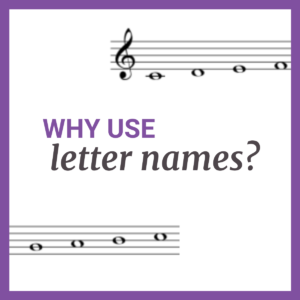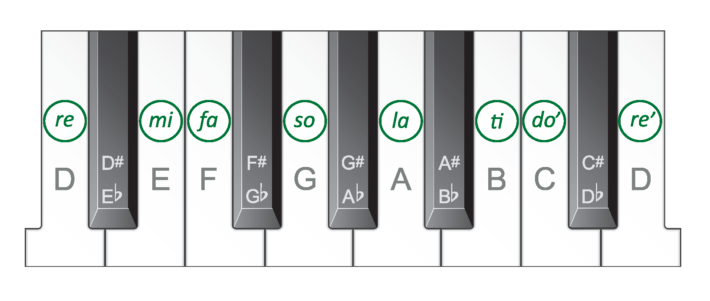Let’s learn about letter names!
Comments Off on Let’s learn about letter names!Music language is the method of human communication, either sung, played or written, consisting of the use of notes, in a structured and conventional way.
If we’re thinking in terms of language, In music, letter notation can be a system used to represent pitches. In conventional Western note-naming, these are the letters A-G.
These letter names communicate which notes you need to play on your instrument or sing and are also a fundamental component of music theory.
This notation approach works alongside Tonic Solfa; where A–B–C–D–E–F–G as letter names refer to the absolute notes or pitches, while the solfa syllables do–re–mi–fa–so–la–ti are relative, showing the relationship between pitches.
So why should I use letter names?

- this system links most strongly with note names/fingerings/positions when playing instruments
- being able to read and write music using letter names is a universal skill – most music theory study or assessment uses this system
- many instruments, ensemble settings and styles of music are notated using this system, so the more familiar you are with it, the better able you are to sight-read and continue making music with others
- using letter names as opposed to scale degree numbers prevents confusion – imagine trying to keep track of what number was for the note and what number communicated the rhythmic value!
- as they progress alphabetically, this assists with understanding the order and sequence of pitches
When did letter names launch?
Music notation systems have used letters of the alphabet for centuries. The 6th-century philosopher Boethius is known to have used the first fourteen letters of the classical Latin alphabet to signify the notes of the two-octave range that was in use at the time.
Following this, the range of used notes was extended to three octaves, and the system of repeating letters A–G in each octave was introduced. The two systems most commonly used today are the Helmholtz and the scientific pitch notation system.
Letter names and the language of music
Although Tonic Solfa is the best way to build your general aural and musicianship skills, letter names, and being able to read them, notate them and understand them, is closely related to what you’ll do theoretically in music, and as a performer.
Just like with learning any language, it takes time to be able to read them quickly. Sightreading is a great way to foster this ability and speed up the note-recognition process, as well as strengthen the link between letter names knowledge and Tonic Solfa.
Example from page 34 of the Musicianship & Aural Training for the Secondary School Level 1 books:

Another Example from page 115 of the Musicianship & Aural Training for the Secondary School Level 2 books:

Example from page 174 of the Musicianship & Aural Training for the Secondary School Level 3 books:

Important note
Remember, when you sing a Major melody, scale or exercise in solfa you are practicing it in EVERY Major key there is (do is ALWAYS the tonic of EVERY Major scale etc). However when you sing in letter names you are only practicing THAT ONE Major key and no others.
It is still important that you sing in letter names as it reinforces academic knowledge about that particular key (key signature) as well as helping you to develop “relative pitch” (the learned version of perfect pitch). So make sure you always sing the correct pitch when singing them or your ears will learn the wrong pitches for the notes!
Happy letter-naming! – Deb


Comments are closed